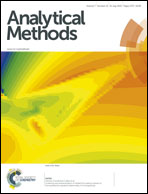Monitoring the wheat straw fermentation process using an electronic nose with pattern recognition methods
Abstract
To monitor the wheat straw solid-state fermentation process in real time, an electronic nose (e-nose) was attempted in this study. The e-nose was designed to detect gas changes in the fermentation process and was equipped with a sensor array composed of eleven selected commercially available metal oxide semiconductor (MOS) gas sensors. Using the e-nose data, an appropriate monitoring model can be constructed to determine process states. Therefore, selecting the optimal pattern recognition method was crucial. For the simplicity of monitoring models, principal component analysis was used to extract features (i.e. principal components or latent variables) of the e-nose data as inputs of monitoring models. For comparison, three representative methods (i.e. Gaussian process, support vector machine and back propagation neural networks) were assessed. The results sufficiently demonstrated excellent promise for the e-nose technique and the Gaussian process performed better than the other two pattern recognition methods.


 Please wait while we load your content...
Please wait while we load your content...